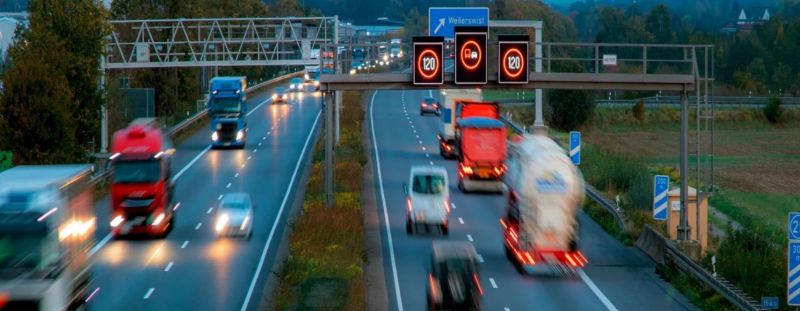
1. In terms of technical principles, quartz sensors (Enviko and Kistler) adopt fully digital piezoelectric technology with faster acquisition speed, and can obtain segmented wheel loads. Bending/flat plate sensors and strain gauge sensors use mechanical structure and strain gauge principles, with slightly lower accuracy.
2. Quartz sensors and strain gauge sensors have smaller installation destruction to road surface, while bending/flat plate sensors have larger affected area.
3. In terms of price, bending/flat plate sensors are relatively cheaper, while quartz and strain gauge sensors are more expensive.
4. The service life is around 3-5 years for all sensors.
5. The weighing accuracy can reach class 2, 5 and 10 for all sensors.
6. The stability is good for all sensors under 50km/h. Quartz sensors have better stability above 50km/h.
7. Quartz sensors are not affected by temperature, while other sensors need compensation.
8. Quartz and strain gauge sensors are better at detecting abnormal driving than bending/flat plate sensors.
9. Quartz and strain gauge sensors have higher installation requirements, while bending/flat plate sensors have lower requirements.
10. The vehicle driving feeling is more noticeable for bending/flat plate sensors, while others have no impact.
11. The optimal reconstruction length is around 36-50 meters for all sensors.
|
Comparison of the performance of different quartz dynamic weighing sensors |
||||
|
Comparative item |
Quartz sensor(Enviko) |
Quartz sensor(Kistler) |
Bending/Flat plate |
Strip sensor(Intercomp) |
|
Technical principles |
1.Fully digital piezoelectric sensor, The acquisition speed is 1000 times that of resistance strain gauge sensors 2.Incomplete wheel load measurement, single wheel weight is collected in segments which can fully reflect the actual weight of the wheel load. |
1.Fully digital piezoelectric sensor, The acquisition speed is 1000 times that of resistance strain gauge sensors 2.Incomplete wheel load measurement, single wheel weight is collected in segments, which can fully reflect the actual weight of the wheel load. |
1.Mechanical combined structure, individual sensors and steel plates are composed of physical structures 2.The principle of resistance strain gauge, when the sensor is subjected to force, it will produce mechanical deformation, and the size of the mechanical deformation will reflect the size of the force. |
Integral resistance strain sensor, when the sensor is stressed, it will produce mechanical deformation, and the amount of mechanical deformation will reflect the amount of force. |
|
Installation layout |
The amount of grooves is minimal and the damage to the road surface is minimal. The average excavation area is less than 0.1 square meters per lane |
The amount of grooves is minimal and the damage to the road surface is minimal. The average excavation area is less than 0.1 square meters per lane. |
Destroy 6 square meters ofroad surface/lane |
The amount of grooves is minimal and the damage to the road surface is minimal. The average excavation areais less than 0.1 square meters per lane. |
|
Price |
normal |
expensive |
cheap |
expensive |
|
Service life |
3~5 years |
3~5 years |
1-3 years |
3~5 years |
|
Weighing accuracy |
CLASS 2、5、10 |
CLASS 2、5、10 |
CLASS 5、10 |
CLASS 2、5、10 |
|
Stability below 50km |
Stablize |
Stablize |
Better |
Stablize |
|
Stability over 50km |
Better |
Better |
Stablize |
Stablize |
|
Factors affecting accuracy |
none |
none |
Affected by temperature, temperature compensation sensor or algorithm compensation is required |
Affected by temperature, temperature compensation sensor or algorithm compensation is required |
| Abnormal driving detection-crossing road | Full pavement, weighing accuracy is not affected | Full pavement, weighing accuracy is not affected | Full pavement, increase the number of built-in sensors | Full pavement, weighing accuracy is not affected |
| Abnormal driving detection-crush gap | Special layout solves inaccurate seam accuracy | No optimized layout | not affected | No optimized layout |
| Abnormal driving detection-escape weighing | Multi-row layout, cannot be skipped | Multi-row layout, cannot be skipped | easy to skip | Multi-row layout, cannot be skipped |
| Installation process | Strict installation process | Strict installation process | Integral pouring,lowinstallation process requirements | Strict installation process |
| Whether drainage is required | none | none | need | none |
| Whether it affect the driver | none | none | Feeling obvious | none |
| Whether affect traffic safety | none | none | The surface steel plate area is large, rainy weather has a greater impact on high-speed vehicles, and there is a possibility of lateral sideslip. | none |
| Optimal pavement reconstruction required length | Below 8 lanes in bothdirections, 36 to 40 meters | Below 8 lanes in both directions36 to 40 meters | Below 8 lanes in both directions, 36 to 40 meters | Below 8 lanes in both directions, 36 to 40 meters |
| Optimal pavement reconstruction required length | More than 8 lanes in both directions, 50 meters | More than 8 lanes in both directions, 50 meters | More than 8lanes in both directions, 50 meters | More than 8 lanes in both directions 50meters |
In summary, quartz sensors have better overall performance but higher prices, while bending/flat plate sensors have cost advantage but slightly lower accuracy and stability. The optimal solution depends on specific project needs.

Enviko Technology Co.,Ltd
E-mail: info@enviko-tech.com
https://www.envikotech.com
Chengdu Office: No. 2004, Unit 1, Building 2, No. 158, Tianfu 4th Street, Hi-tech Zone, Chengdu
Hong Kong Office: 8F, Cheung Wang Building, 251 San Wui Street, Hong Kong
Factory: Building 36, Jinjialin Industrial Zone, Mianyang City, Sichuan Province
Post time: Jan-25-2024





